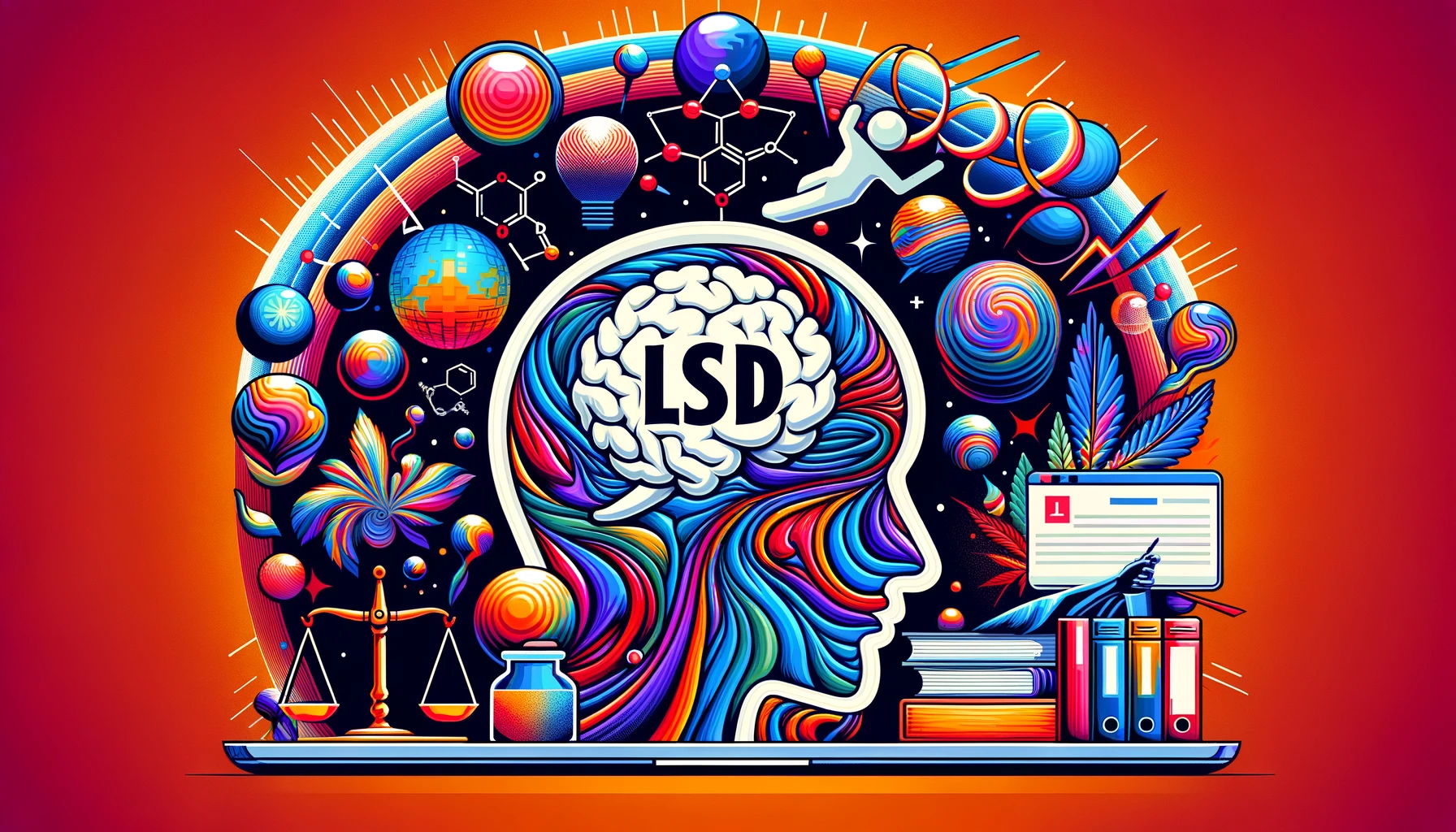Lysergic Acid Diethylamide, known as LSD, remains one of the most potent and controversial substances, with effects that have fascinated and alarmed society since its synthesis in 1938 by Albert Hofmann. This comprehensive exploration delves into LSD’s complex history, from its early medical use to its cultural significance, legal battles, side effects, and the resurgence of interest in its therapeutic potential.
Policies and Legal Frameworks
Globally, LSD is primarily illegal, classified as a Schedule I substance under the Controlled Substances Act in the United States and similarly restricted in many other countries. These classifications, rooted in the drug’s association with the 1960s counterculture movement, reflect concerns over abuse potential and lack of accepted medical use. International policies, influenced by treaties such as the 1971 United Nations Convention on Psychotropic Substances, have cemented LSD’s status, complicating research and therapeutic applications.
Side Effects and Risks
The use of LSD is associated with a range of psychoactive effects, from visual hallucinations and altered perceptions to profound changes in mood and thought. However, it also poses risks, including the potential for “bad trips,” characterized by intense anxiety, paranoia, and delusions. The unpredictable nature of LSD’s effects underscores the importance of understanding and mitigating its risks, especially in unsupervised settings.
Historical and Cultural Impact
Initially explored for its psychotherapeutic potential, LSD’s journey took a dramatic turn as it became emblematic of the 1960s counterculture. Despite early interest from the psychiatric community and even covert research programs like MKUltra, LSD’s widespread recreational use and association with social rebellion led to strict legal crackdowns, stifling research and therapeutic exploration for decades.
The Renaissance of LSD Research
The 21st century has seen a renewed interest in the potential therapeutic benefits of LSD, driven by a more nuanced understanding of its effects and a growing body of clinical research. Studies now explore its efficacy in treating conditions such as depression, anxiety associated with terminal illnesses, and PTSD, under controlled, regulated conditions. This resurgence is part of a broader psychedelic research renaissance, challenging previous misconceptions and opening new avenues for treatment.
Modern Documentaries and Cultural Reevaluation
The evolving narrative of LSD has been captured in several modern documentaries, offering insights into its complex history, scientific research, and cultural significance. Notable examples include:
- “The Sunshine Makers” (2015): This documentary focuses on Nicholas Sand and Tim Scully, two key figures in the 1960s who sought to change the world through the mass distribution of LSD. It provides a historical look at the era and the impact of their actions on society and drug policy.
- “Neurons to Nirvana” (2013): A broader exploration of various psychedelics, including LSD, and their potential therapeutic uses. The documentary examines the science behind psychedelics and their possible benefits in treating mental health disorders.
- “Dosed” (2019): While not exclusively about LSD, this documentary explores the therapeutic potential of psychedelics, including magic mushrooms and ibogaine, in treating addiction and mental illness, reflecting the growing interest in psychedelic therapy.
Looking Forward
As societal attitudes shift and scientific research advances, there’s potential for policy changes that could facilitate the therapeutic use of LSD under controlled conditions. The inclusion of LSD in modern documentaries underscores its enduring fascination and potential for profound impacts on mental health treatment and our understanding of consciousness.
The journey of LSD from a psychiatric tool to a counterculture symbol and, now, a subject of scientific reevaluation, mirrors changing societal attitudes towards drugs and mental health. With continued research, nuanced policy-making, and informed public discourse, the future of LSD may well include both acknowledgment of its cultural significance and integration into therapeutic practices, offering new hope for individuals with mental health conditions.
Disclaimer
This article is intended for informational purposes only and does not endorse or encourage the use of Lysergic Acid Diethylamide (LSD) or any other illegal substances. The content provided aims to offer an educational overview of LSD’s history, cultural significance, therapeutic research, and legal status. It is important to note that the use, possession, distribution, and manufacture of LSD without proper authorization is illegal in most countries and can result in severe legal penalties.
The information regarding the therapeutic potential of LSD is based on ongoing research and should not be construed as medical advice. The effects of LSD are complex and can vary widely among individuals; unsupervised use can pose significant health risks. Anyone struggling with substance use or mental health issues is encouraged to seek professional medical help.
The mention of documentaries and other media is for informational purposes only and does not imply affiliation or endorsement. Views and opinions expressed in these documentaries are those of the filmmakers and participants and do not necessarily reflect the views of this article’s author or publisher.
Before considering any form of treatment, including those involving substances currently under research, consult with a healthcare professional to understand the potential risks and benefits.

